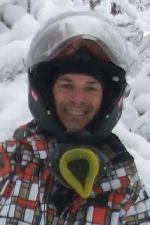In January 2015, I became the proud owner of a dream that I had had for a long time, which was the purchase of a 120-inch XRS 600 E-TEC. The reason I was after this model is that I wanted a snowmobile that was robust, reliable, had loads of storage, was fuel and oil efficient all while being endowed with reasonable performance.
At that time, I was on my fourth 600 E-TEC. I foresaw doing between 10,000 km and 15,000 km per year, and I wanted to keep this purchase for four seasons. So, the bets were on to see if the XRS was going to respond to my needs.

I consider myself as quite an athletic snowmobiler who likes to ride on the bumps of deteriorated trails. Taking this into consideration, I really wanted my ride to be equipped with the famous KYB Pro 40 shock absorbers and a strengthened frame, which is only available on RS models.
Four years have gone by, and 40,000 km have been added to the counter. Here is a brief summary of my comments on this machine. First, I must state that I loved this ride. The standards that I set were met with flying colours. As a matter of fact, the XRS was extremely robust, reliable, and agile in winding trails. In order to cover all these kilometres, it took, however, 2 track replacements, 2 engine refreshments, 3 suspension oil changes, 2 starters, an oil pump, a reactor plate (magneto), an ignition coil as well as several other small minor repairs that are consequential in the snowmobile world.
The chosen XRS was fitted with an Ice-Ripper track as well as deep Qualipièces Top Gold runners. I believe strongly, in fact, that these two elements are essential to integrate into the machine if you really want to make the most out of the control and agility of the latter. On the autonomy side, when driving at a good pace and in good conditions, I was able to ride for over 270 km before having to fill up on gas. Concerning oil consumption, it averaged 850 to 950 km for the 3.8-litre reservoir. In order to prolong the life of the belts, which tend to be dustier on a BRP than its competitor, I used BRP’s 391 version. The latter is made for the 800 E-TEC. For instance, I travelled 12,000 km with the same belt of this series.

Inherently, the XRS is not a version for all, but well-seasoned drivers. Higher by an inch and a half in the front than the X version, it is accompanied by very rigid suspension to confront the most difficult bumps. However, the higher position enhances the centre of gravity, which provides a tendency to ski lift. Therefore, in the curves, the driver must move more in order to keep it on track. The evolution of the legs of the RAS 2 improves driving in the bumps by considerably reducing the wobbling effect. For having repeatedly struck large bumps as well as carrying out 20-foot-long jumps, the XRS was faithful to its reputation of the BRP snow-cross version. Ensuring a regular cleaning of the pulleys allowed them to be reliable and effective while maintaining constant response. Two negative points concerning this model, if compared to the model that the competition offers, are that I found that it lacked a bit of height, and the track should have been 129 inches instead of 120 inches. However, these shortcomings are now a thing of the past for the new buyers of XRS 600 R E-TEC 2019. Indeed, the all-new engine offers a 5 hp gain, a new and more efficient pulley pDRIVE, as well as a 129-inch track.
In conclusion, it is with all this in mind that I consider the Ski-Doo XRS 600 E-TEC 2015 as one of the best-used models to procure. In addition, the ride’s red flame colours still attract attention and provide a look that makes the brand stand out. The 600 E-TEC engine and the quality of all the components have proved to be beyond my expectations.


